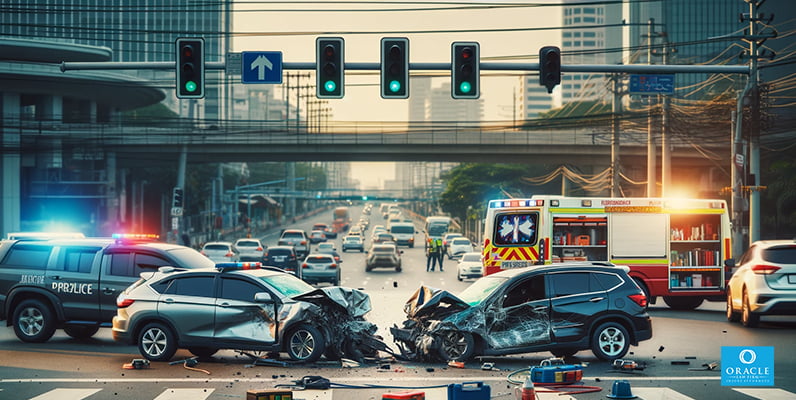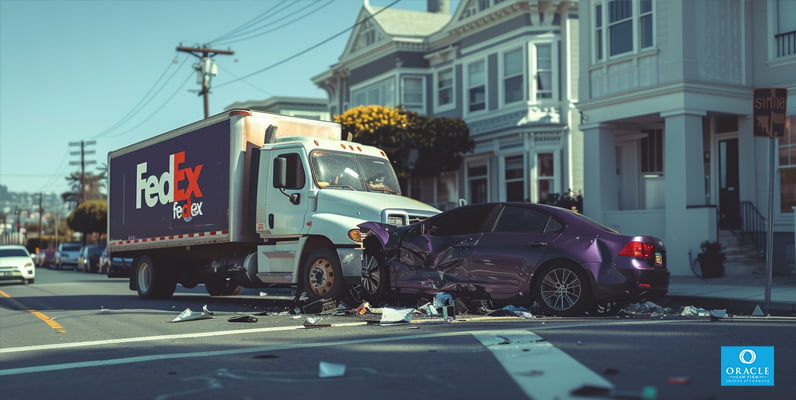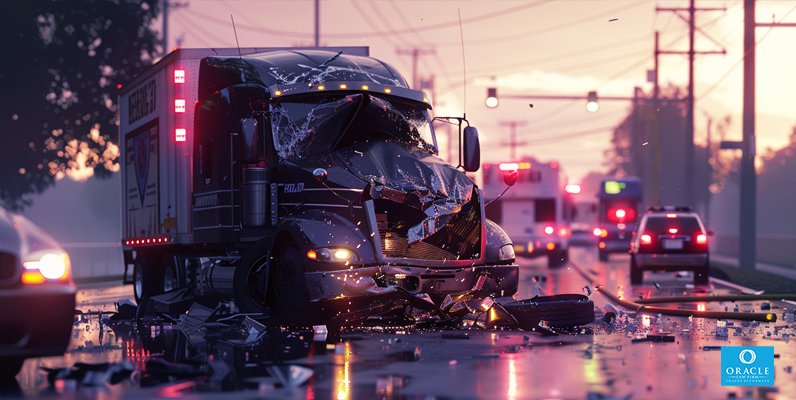Accidents happen, but when it comes to determining who’s at fault, things can get complicated. Protecting your rights, your finances, and your driving record requires a firm grasp of the process of how to dispute a car accident fault. This blog post will guide you through the intricacies of understanding fault, navigating the aftermath of a fault accident, and employing legal strategies to challenge an at-fault determination.
Key Takeaways
- Understand fault in car accidents through evidence, communication with insurance companies and legal assistance.
- Challenge the insurance company’s assessment by providing evidence such as photos, witness statements and documentation.
- Initiate dispute promptly to increase chances of favorable outcome. Present new evidence for successful advocacy & navigate aftermath with an attorney to protect rights.
Understanding Fault in Car Accidents
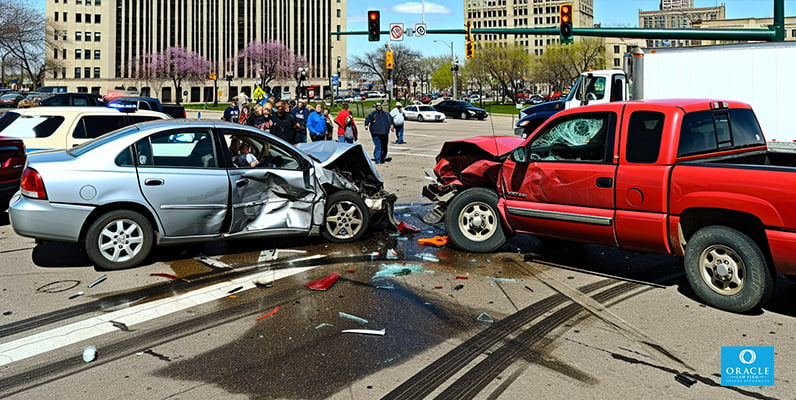
Establishing culpability in a car accident plays a significant role in insurance coverage and compensation. Insurance companies and their adjusters hold the responsibility of investigating car accidents and determining the at-fault driver. Ascertaining fault involves an extensive investigation covering police reports, witness statements, and accident scene documentation. In this process, insurance companies determine fault, which can lead to financial consequences and increased insurance premiums for the at-fault driver.
Disputing car accident fault effectively requires a combination of strong evidence, clear communication with the insurance company, and, in some cases, seeking legal assistance. Understanding the process to dispute car accident fault can help protect your rights and minimize the financial impact of an accident.
Contesting the Insurance Company’s Fault Assessment
Should you disagree with the insurance company’s fault determination in a car accident, it becomes necessary to challenge their decision. The initial step is to reach out to the insurer promptly and establish a record of your dissent. It’s important to gather and provide evidence supporting your claim, such as photographs, witness statements, and relevant documentation.
Initiate Your Dispute Promptly
Promptly initiating a dispute and documenting your disagreement with the insurance company could encourage the adjuster to reevaluate their decision. When disputing the insurance company’s fault assessment, be sure to include evidence supporting why they are incorrect.
Contesting a traffic ticket related to the accident may help improve your chances of successfully disputing fault. It is advisable to avoid a conviction on the ticket for a better outcome.
Presenting New Evidence
The presentation of fresh evidence becomes imperative in backing up your account of events and questioning the fault determination. Photographic and video evidence can be particularly effective, as can witness statements and police reports. Your lawyer can also furnish additional evidence to support your case.
Mistakes in a police report can be brought to the attention of the officer. It may be possible to request an amendment of the report. An attorney can provide valuable assistance in disputing a liability claim and pursuing a fair resolution to your injury claim.
Advocate for a Reevaluation
For advocating a reassessment of the insurance company’s fault assessment, you can introduce further evidence or question the validity of the evidence used in their decision. New evidence could include documentation supporting the necessity of further tests and measurements, analysis of physical memory characteristics, and examination of existing evaluation information.
The prospects for successfully advocating for a reevaluation can vary, but compiling pertinent documentation and submitting persuasive arguments can improve your chances.
Navigating Through the Aftermath of a Fault Accident
Navigating the aftermath of a fault accident requires dealing with various parties, such as insurance companies, attorneys, and other drivers involved. When interacting with police officers at the accident scene, be truthful, precise, courteous, and provide only necessary details, without apologizing or accepting blame. Be prepared to face potential criminal charges if the accident results in death or serious injury for which you are at fault.
Comprehending the possible outcomes of an at-fault accident, which includes raised insurance premiums and legal ramifications, becomes significant for safeguarding your rights and interests. Engaging a car accident lawyer can significantly help you navigate this complex process and achieve a favorable outcome.
The Role of Documentation in Disputing Fault
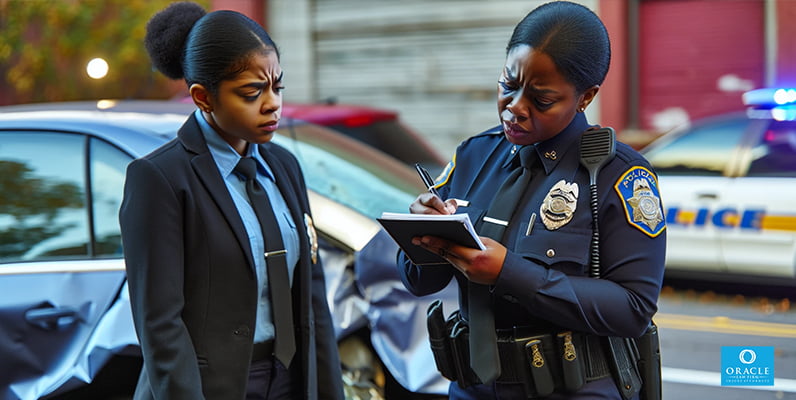
Recordings, including police reports and witness statements, hold a key role in disputing fault and constructing a compelling case. These documents provide supplemental details regarding the events prior to the accident and can assist in establishing culpability.
To gather documentation related to a car accident, follow these steps:
- Obtain a copy of the crash report.
- Collect witness statements as soon as possible.
- Engage an attorney or their investigators to gather information from witnesses and ensure the accuracy of their statements.
These documents can be invaluable in challenging a fault determination and presenting a persuasive argument in your favor.
Legal Strategies to Challenge an At-Fault Determination

Questioning an at-fault determination may necessitate legal actions like employing an attorney, refuting fault allegations, and lodging a personal injury lawsuit. Speaking with an insurance representative regarding the determination can be beneficial, and an attorney can provide guidance in this process.
How Attorneys Counter Fault Allegations
Attorneys can help counter fault allegations by gathering evidence, negotiating with insurance companies, and representing you in court. They can conduct a comprehensive investigation of the accident to gather evidence that reduces your responsibility and submit it to validate your account of the incident.
In some cases, winning a traffic ticket dispute related to the accident may impact your car accident injury claims. Your attorney can submit it as evidence that you are not liable for the accident, potentially resulting in the insurance claim being dropped or your liability reduced.
Filing a Personal Injury Lawsuit
If the insurance company’s fault determination is unfavorable, filing a personal injury lawsuit may be necessary to recover compensation for damages and injuries. The procedure for filing a personal injury lawsuit after a car accident generally includes:
- Composing the complaint
- Delivering the complaint to the defendant
- The defendant’s reply
- Discovery
- Deposition and testimony
- Settlement negotiations
- Trial
Addressing Tickets and Citations Related to the Accident

Challenging tickets and citations associated with the accident can exhibit your readiness to safeguard your stance and uphold your rights. The procedure for disputing a traffic ticket connected to a car accident in court generally involves:
- Collecting evidence
- Seeking legal counsel
- Entering a plea of not guilty
- Preparing for trial
- Submitting your case
- Waiting for the court’s ruling
Engaging the services of a lawyer can aid in disputing a traffic ticket stemming from a car accident by:
- Furnishing legal knowledge and representation in court
- Facilitating the collection of evidence
- Questioning the ticket’s legitimacy
- Negotiating with the prosecutor
- Presenting a robust defense in your stead
Comparative Negligence: Understanding Partial Responsibility
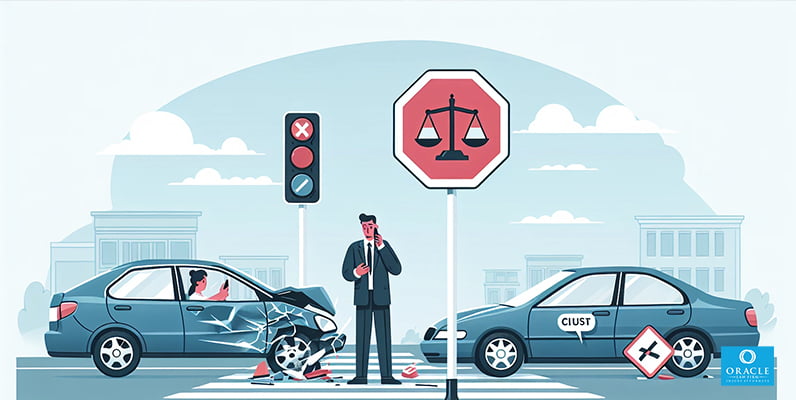
Comparative negligence is a legal principle used in some states to determine liability for incidents, where drivers could be eligible for compensation for damages even if they have partially instigated the collision. The final settlement amount may be proportionately reduced based on the degree of fault.
The percentage of fault in comparative negligence is ascertained by evaluating the level of negligence of each party involved in the incident. This is usually done by a jury or judge, who considers the evidence and determines the percentage of fault attributable to each party. The percentage of fault can vary from 0% to 100%, and it influences the amount of damages for which each party is liable.
The Impact of No-Fault State Regulations on Your Claim
No-fault state regulations can considerably influence your claim, as these states mandate insurance companies to bear the costs of an accident irrespective of the party responsible. Twelve U.S. states, including Florida, Michigan, and New York, follow no-fault insurance regulations.
Understanding the specific laws in your state is crucial for navigating the aftermath of a car accident. In no-fault states, the process of disputing fault may be different, and it’s essential to be aware of the unique regulations that apply to your situation in order to protect your rights and interests.
Preparing for Potential Rate Increases and Insurance Implications
Being deemed responsible for causing an accident could lead to considerable rate hikes and possible insurance repercussions. To mitigate the effect of an at-fault accident on your insurance rates, consider opting for a higher deductible or enrolling in a defensive driving course.
It’s important to be aware that an at-fault accident will be taken into account by insurance companies for a period of three to five years, depending on the insurance company and relevant state regulations. Knowing the potential consequences of an at-fault accident and how it can impact your insurance premiums will help you make informed decisions and better prepare for the future.
How to Handle Communication with Involved Parties
Managing communication with involved parties, such as insurance companies, attorneys, and other drivers, is important for safeguarding your rights and interests. When communicating with an insurance company following an accident, it is important to:
- Consult an attorney before speaking to the insurance adjuster
- Refrain from assuming responsibility
- Maintain meticulous records of all communication and transactions
- Ensure clarity in all communications
When dealing with a car accident, it’s advisable to initially contact your own insurance provider. Depending on the situation, however, it may be necessary to communicate directly with the other driver’s insurance company. In such cases, it’s prudent to be cautious and direct the other driver to your own insurance company if they contact you, as the other driver’s insurance company may be seeking information.
Summary
Disputing car accident fault is a complex process that requires a comprehensive understanding of fault determination, proper gathering and presentation of evidence, and effective communication with involved parties. By following the strategies outlined in this blog post, you can navigate the aftermath of a fault accident, protect your rights, and minimize potential financial consequences. Stay informed, stay prepared, and don’t hesitate to seek legal assistance when necessary.
Frequently Asked Questions
How do I argue an auto insurance claim?
Submit a Claims Appeal Letter to the Insurance Company and include evidence to support your argument. Document the evidence thoroughly and consider hiring legal counsel to help with your appeal.
How do you deal with an accident that was your fault?
After an accident that was your fault, make sure you and any passengers are safe, call 911, exchange information with the other driver, document the scene and notify your insurance company to start the claims process.
How is fault determined in a car accident?
Fault is determined in a car accident by insurance companies and their adjusters, based on evidence such as police reports, witness statements, and accident scene documentation.
How can I dispute the insurance company’s fault assessment?
Initiate a dispute promptly, present new evidence, and advocate for a reevaluation of the insurance company’s fault assessment to dispute it.
